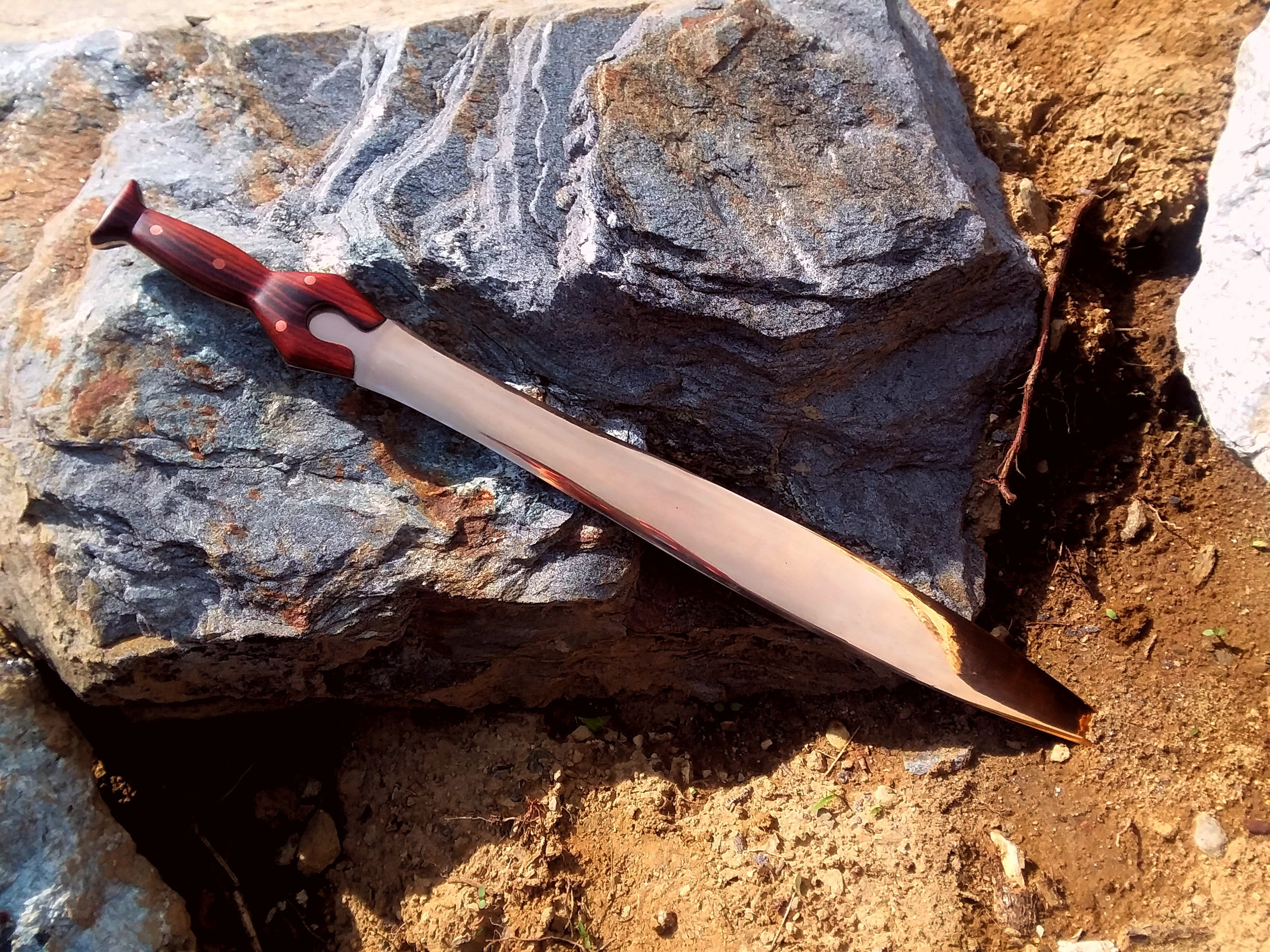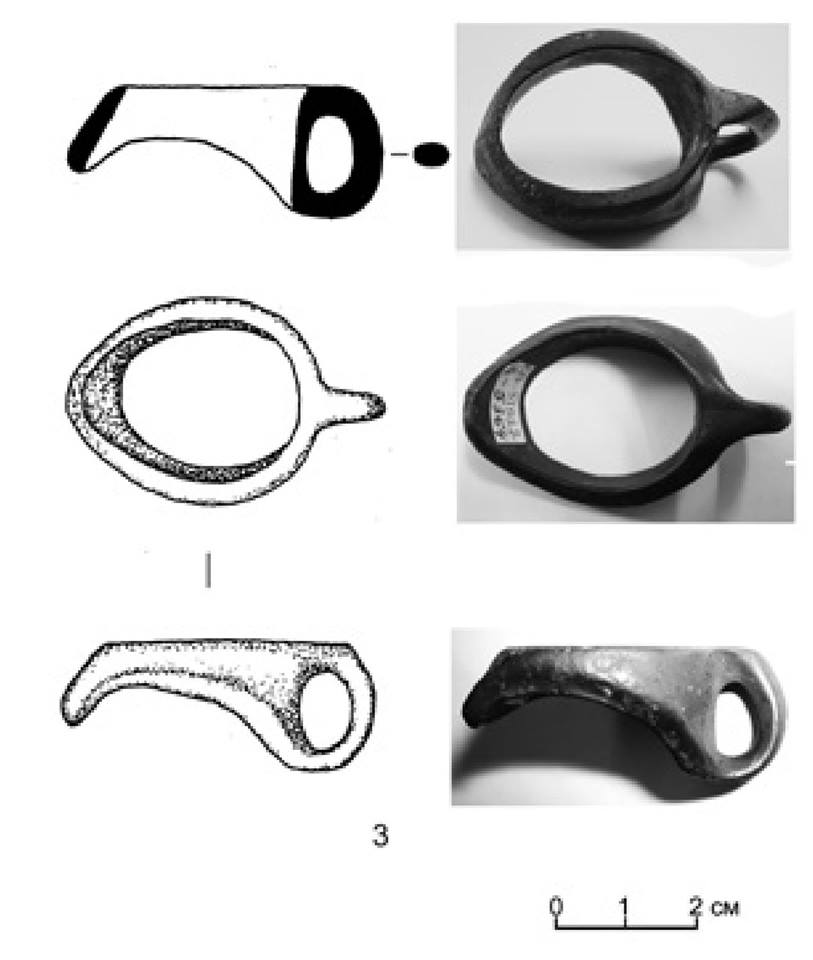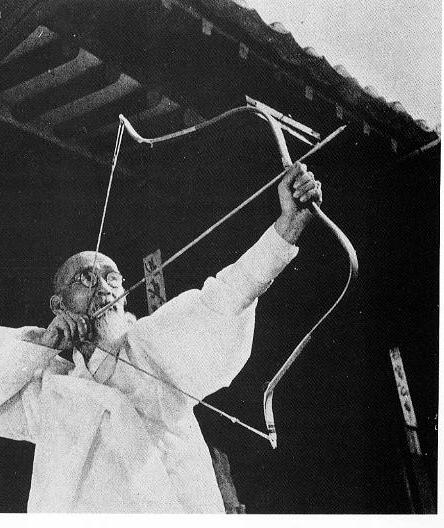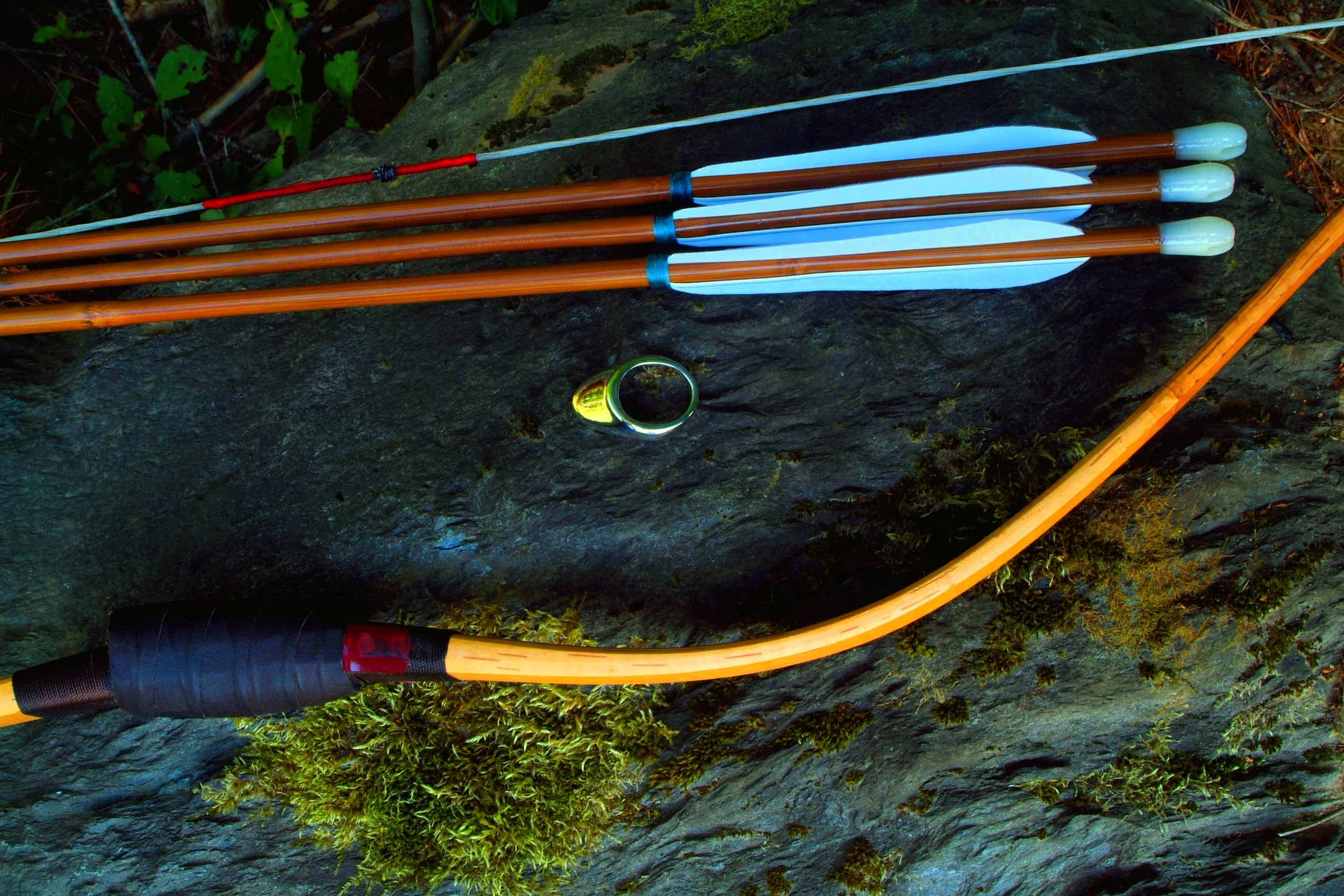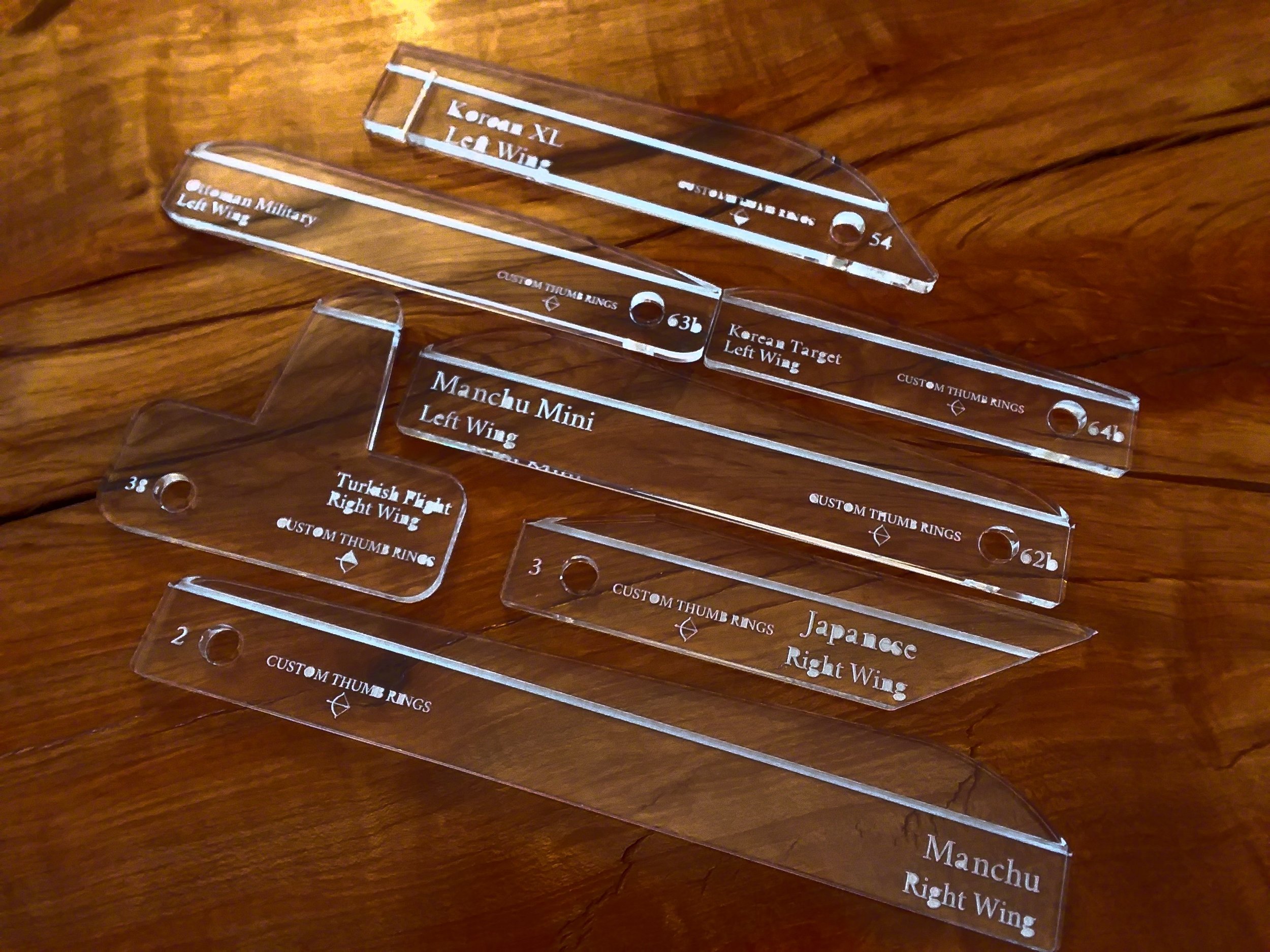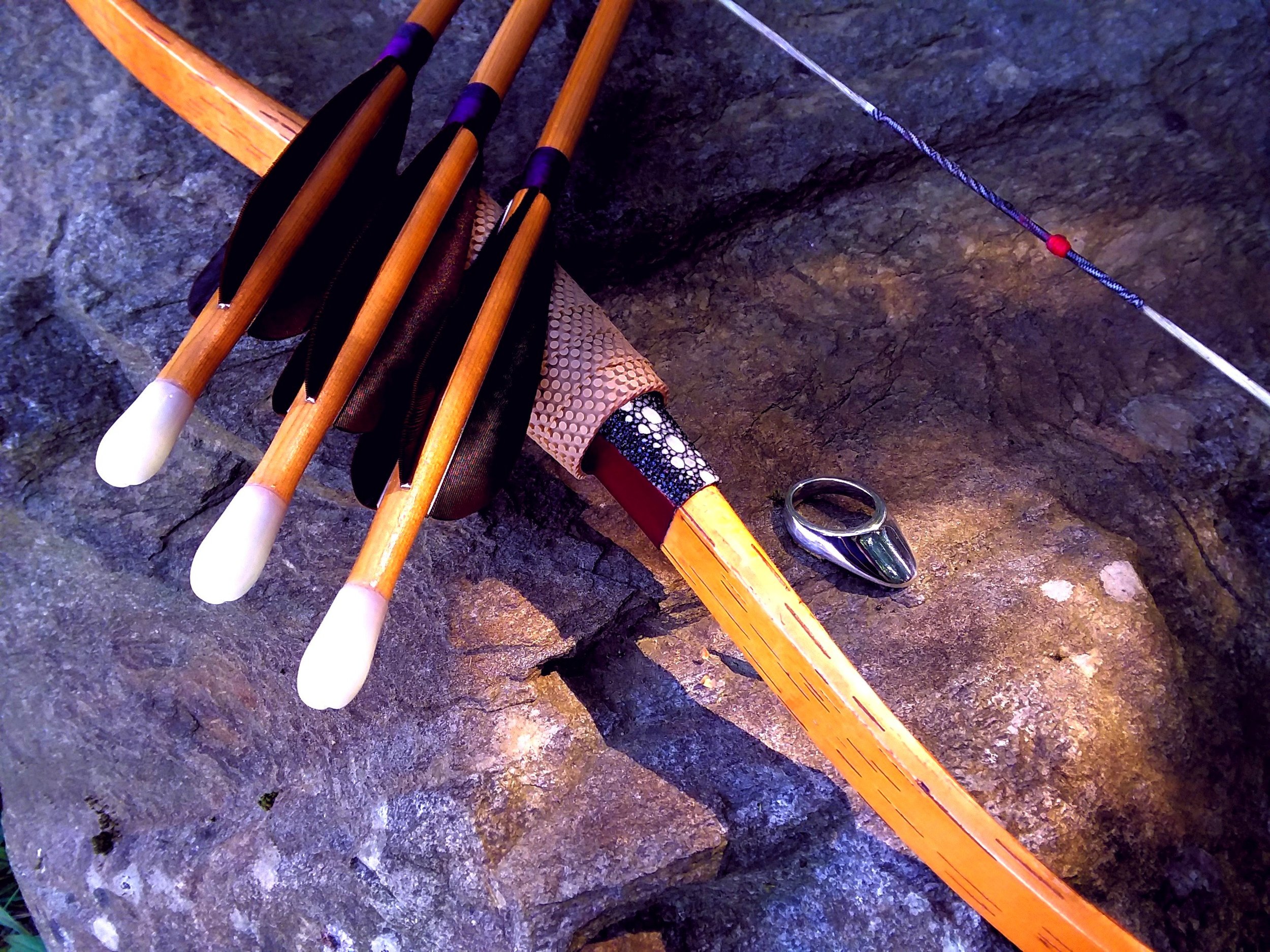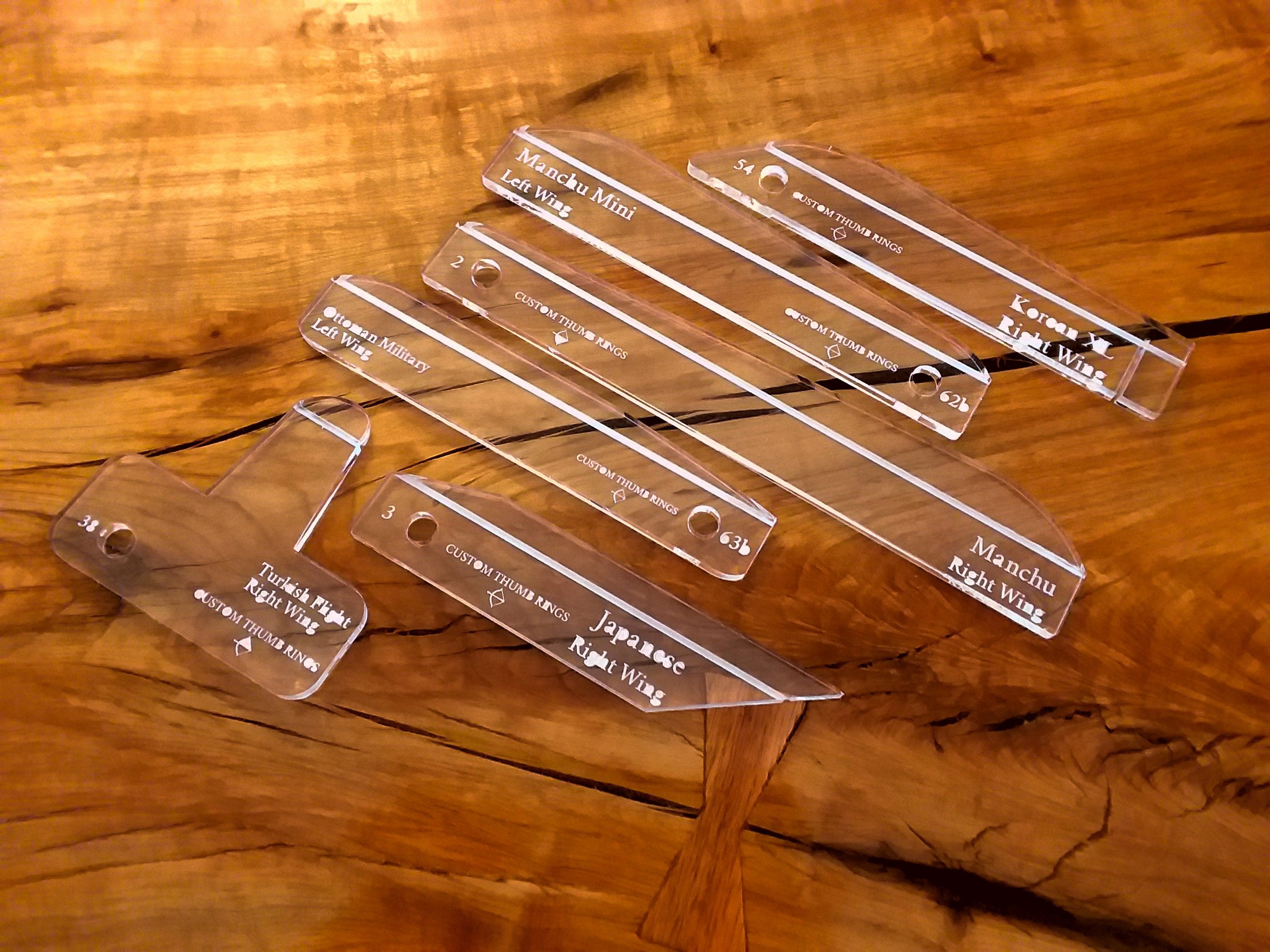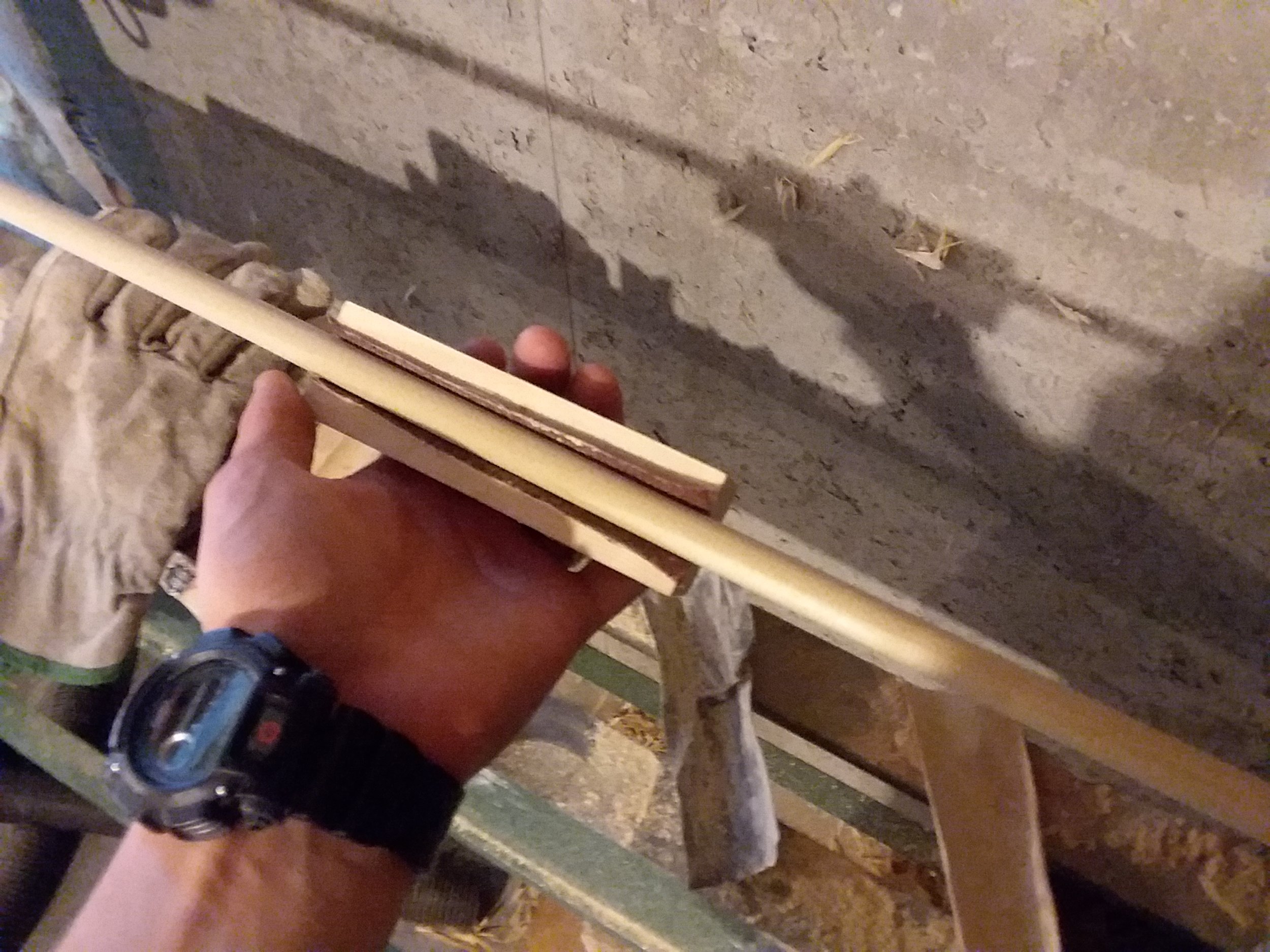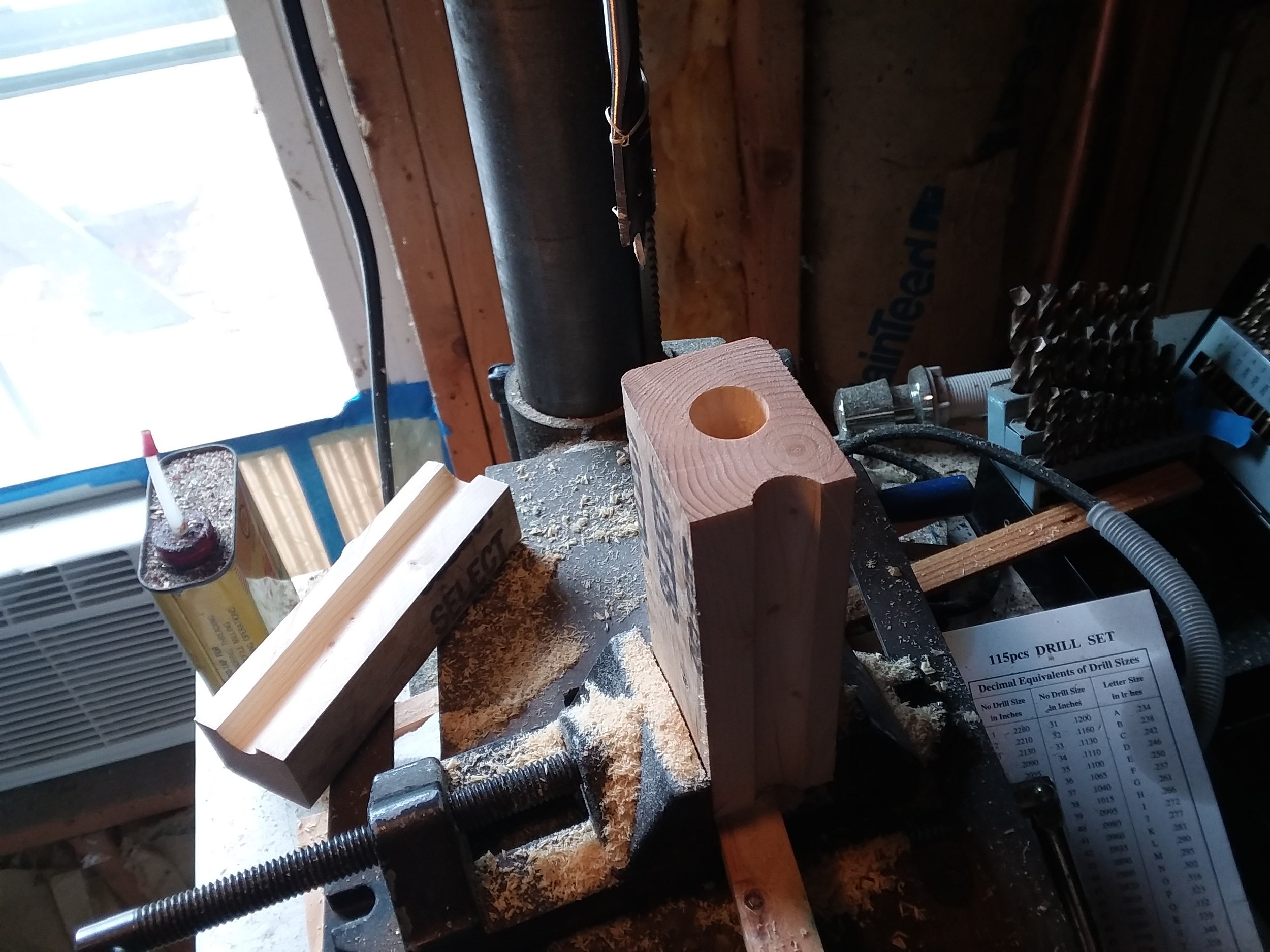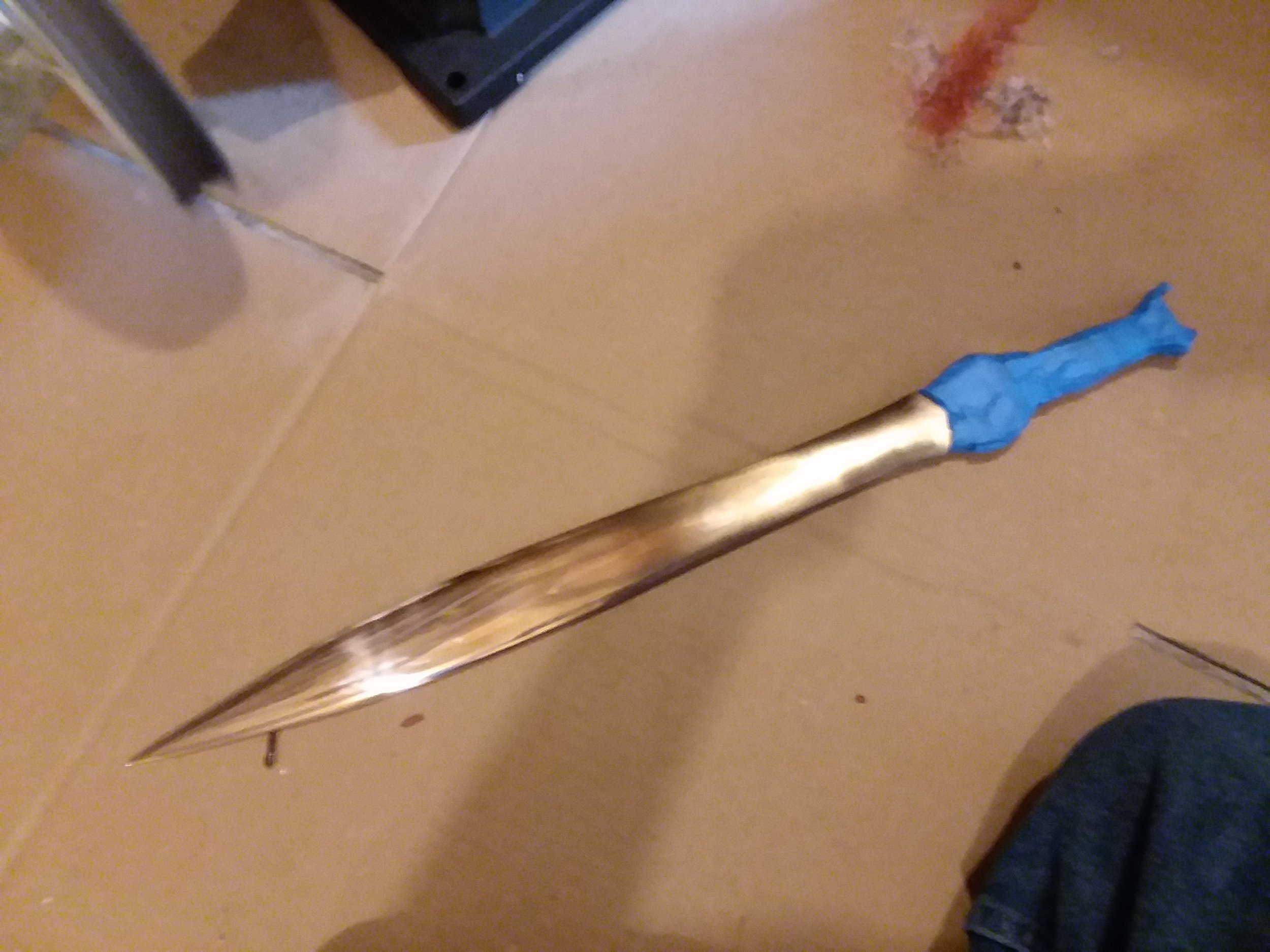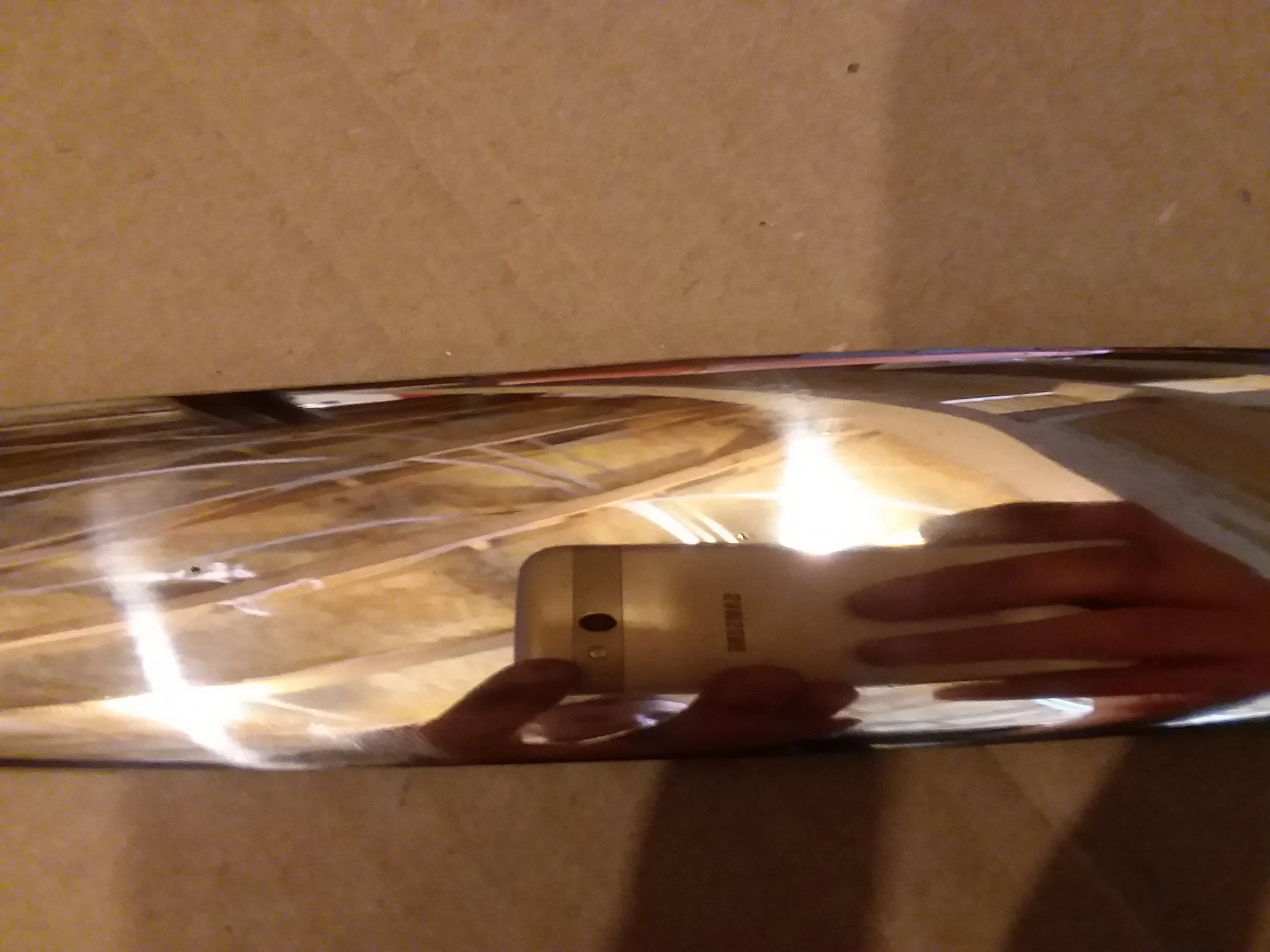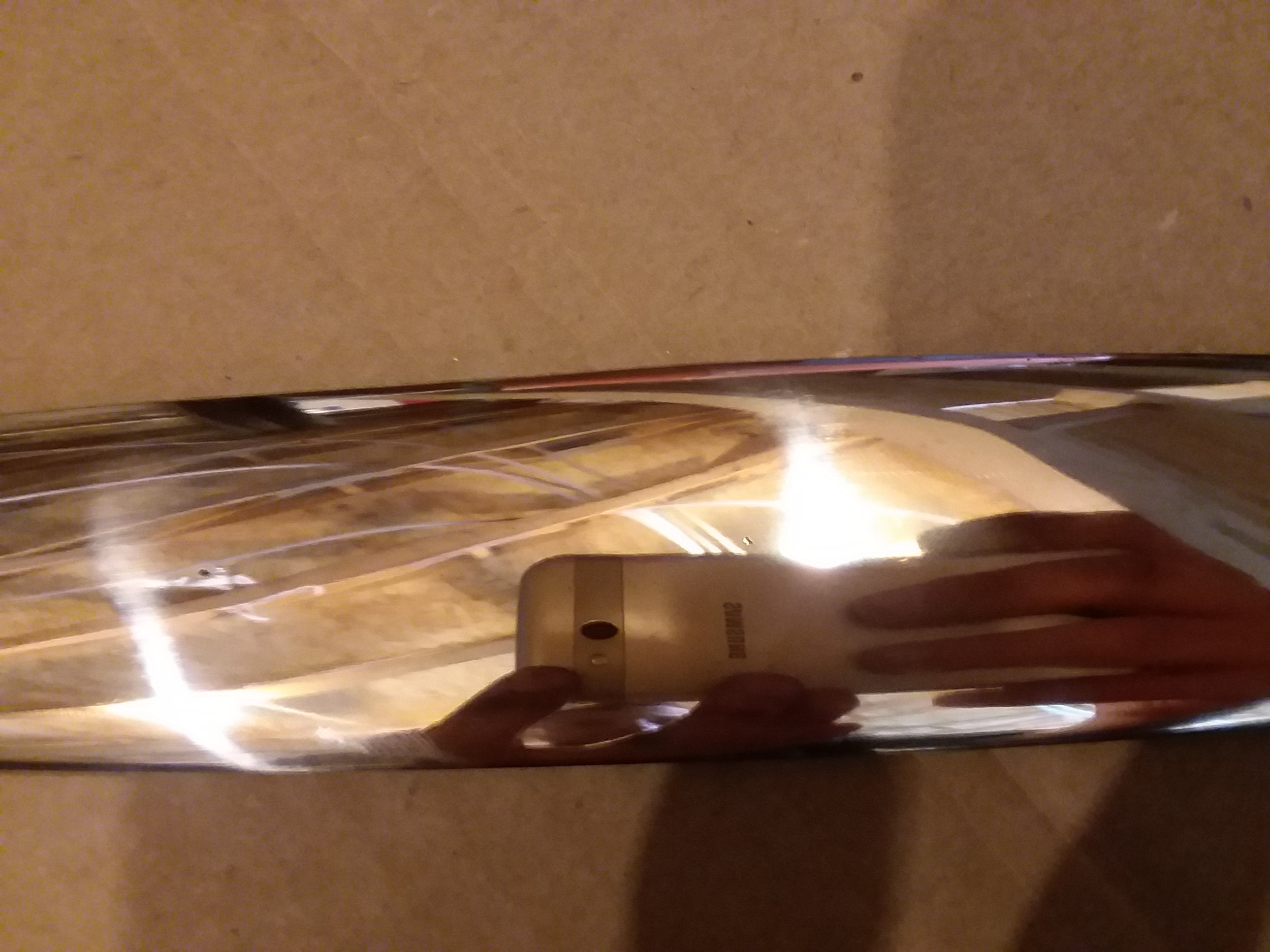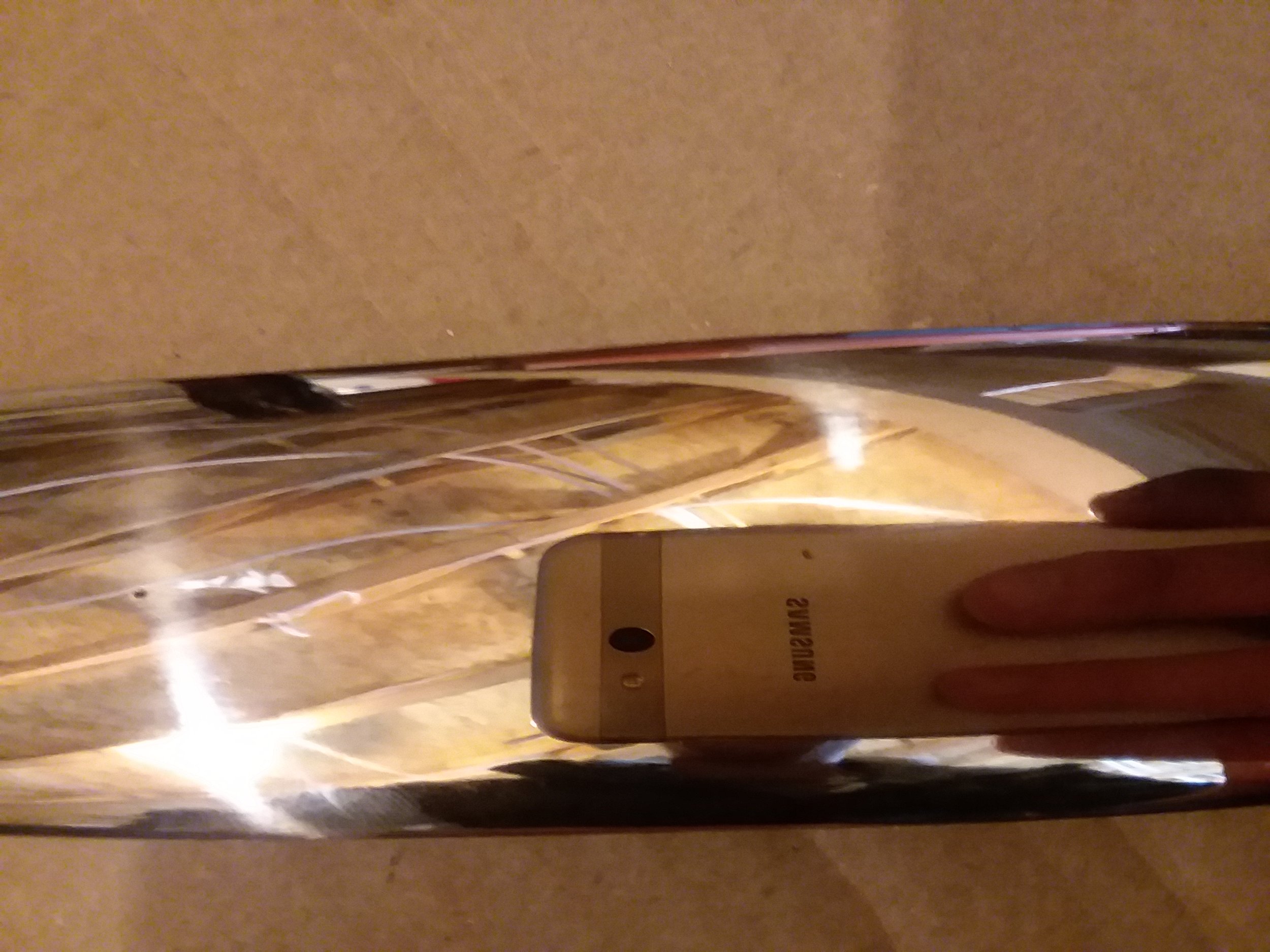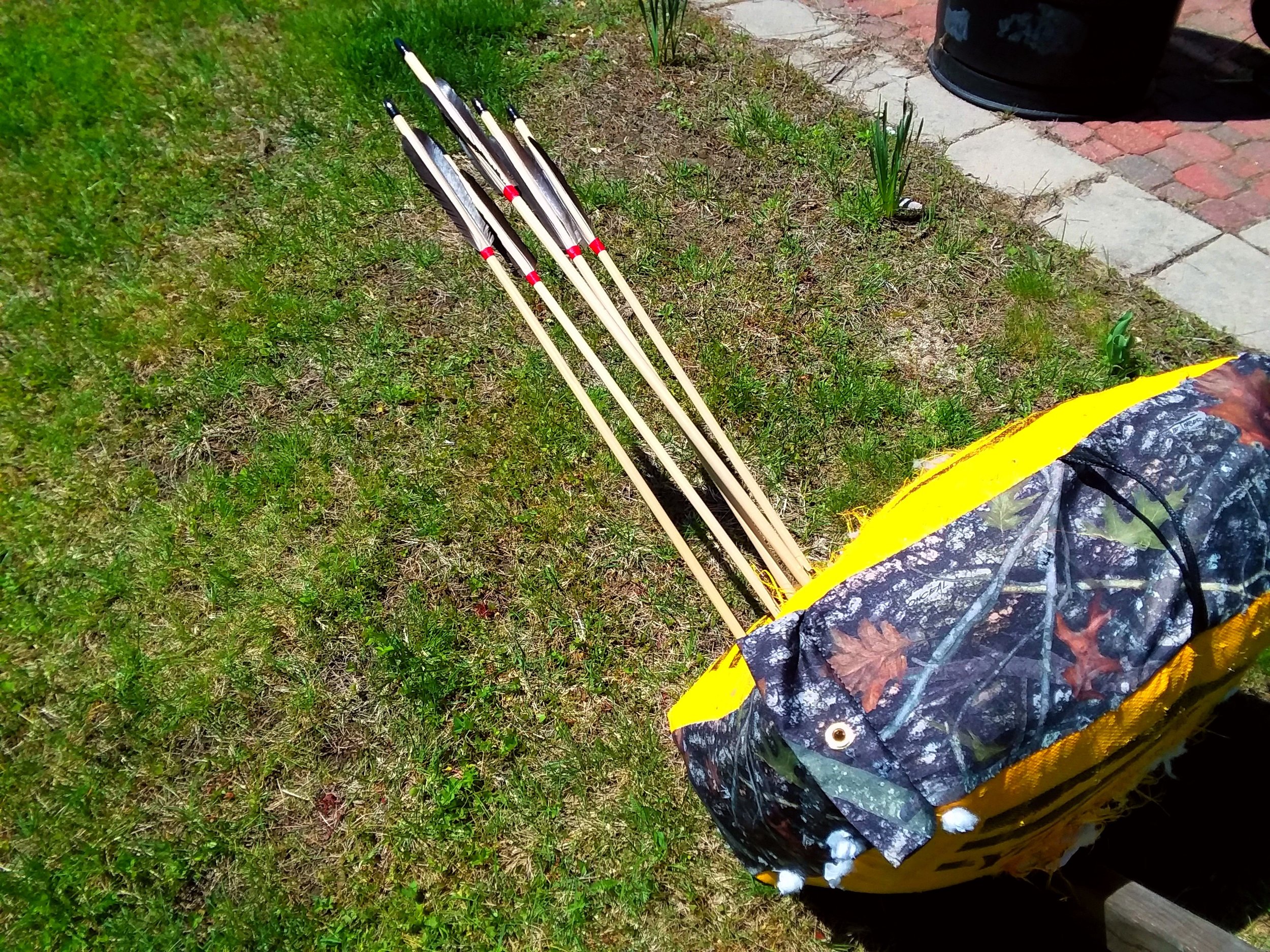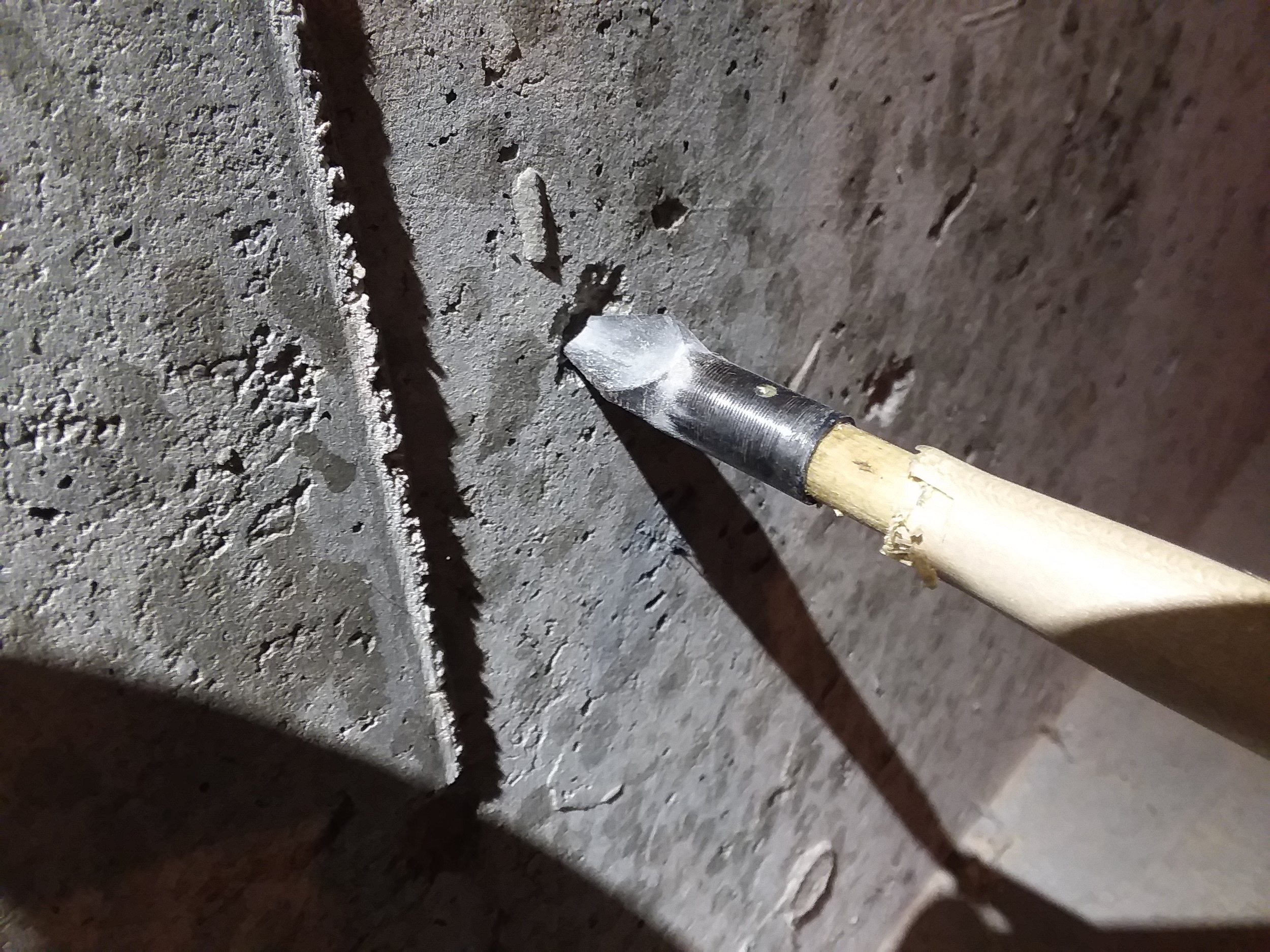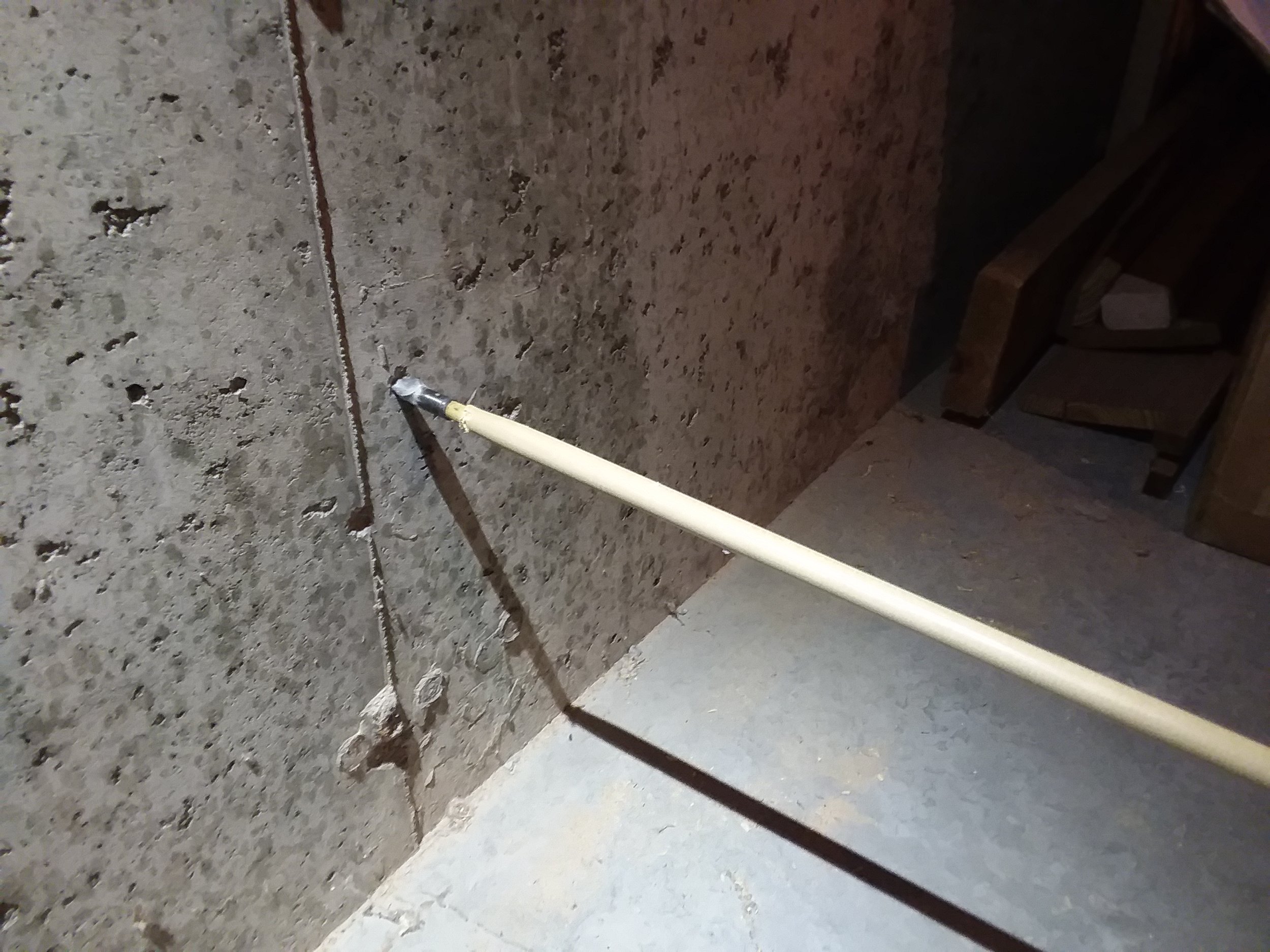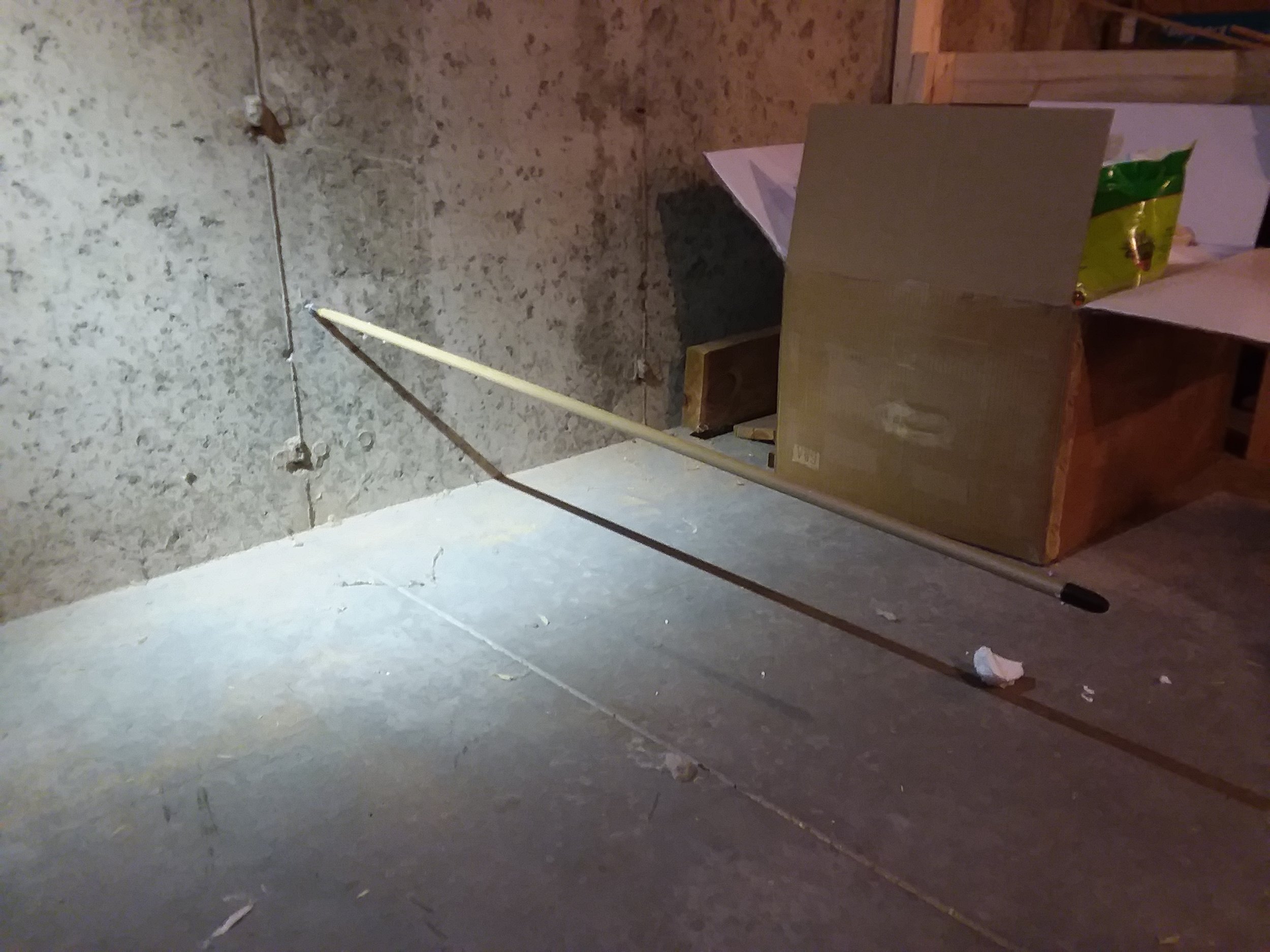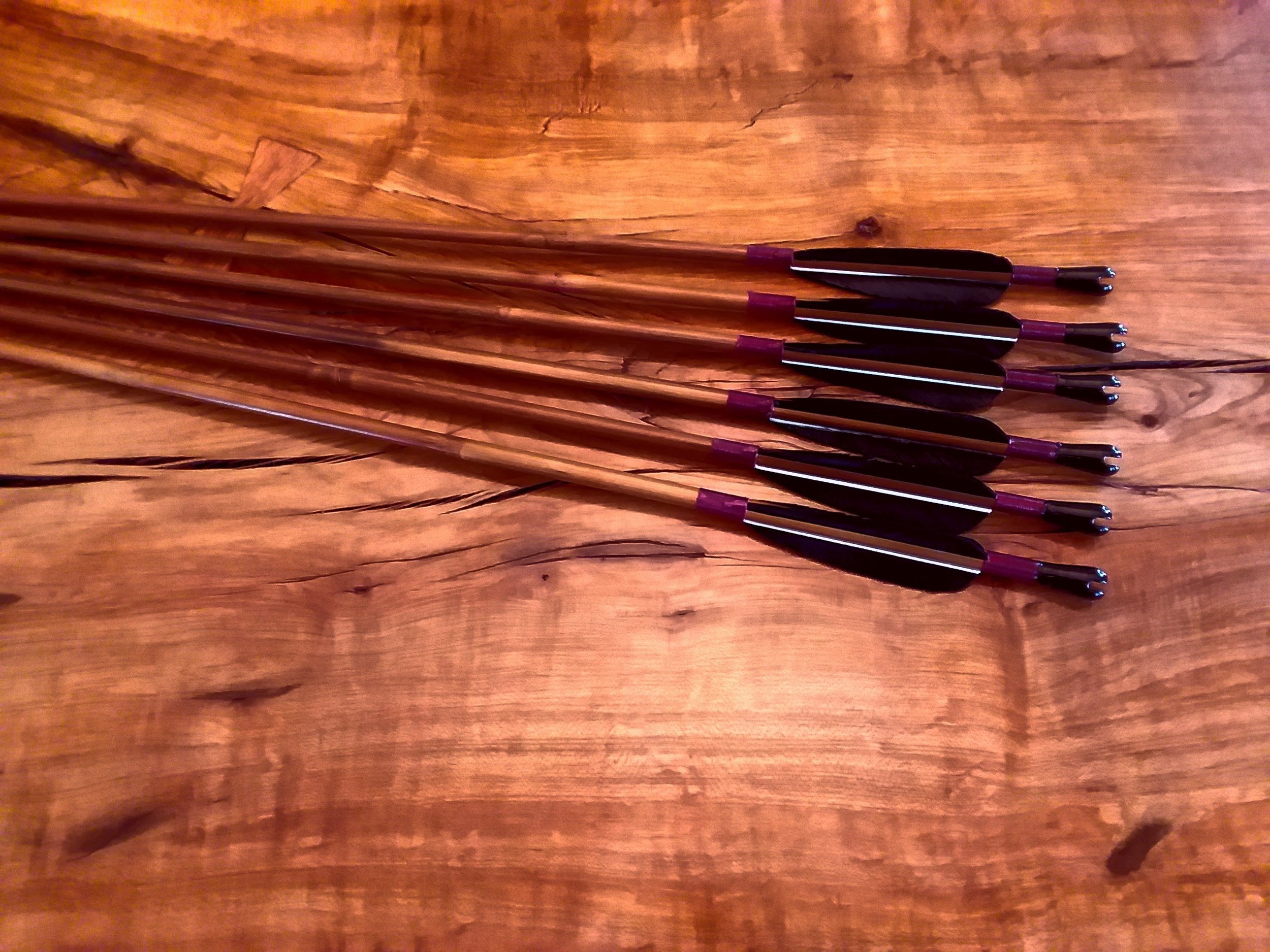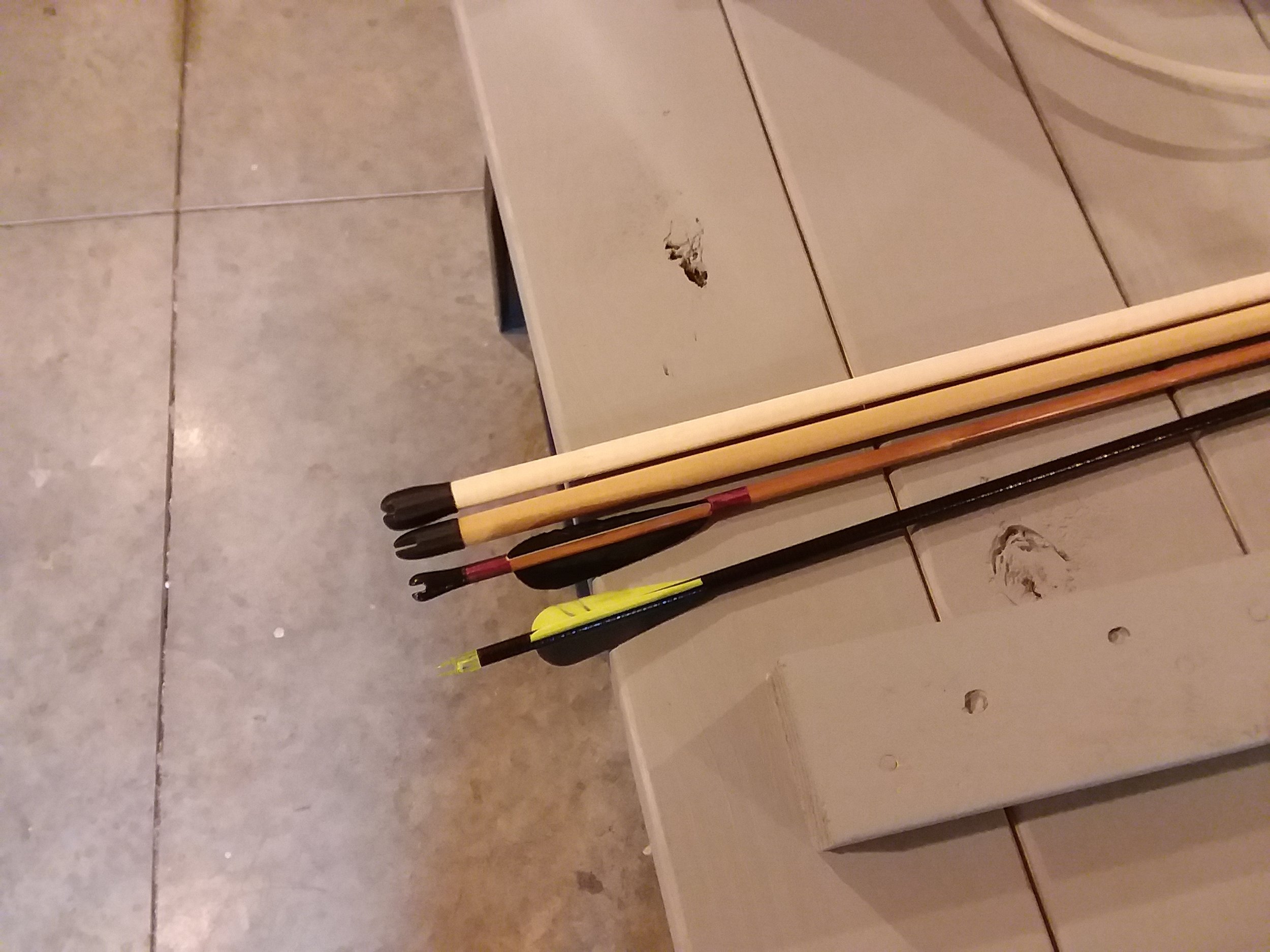Again, trimming the fletching presented a problem. Normal hot-wire-cutters aren't long enough. We could build one, but again that may be beyond what most people would want to do or be capable of. There is always the blow-torch and bent coat hanger solution, however we ultimately just went with the easiest: scissors. The results were very reasonable, but somewhat short of excellent. And, as you can see from the above image, they are a success.
So, project completed, what did we get right and what did we get wrong or would we do differently? Real Manchu arrows have complex taper, shallow bulbous nocks for HUGE strings, different points, and are (allegedly) fletched with eagle feathers. For a set of display arrows, adding tapers would be very reasonable. In this case though, we're questing for extreme mass on arrows that'll actually see not-insignificant use. Tapers then would be both time consuming and counterproductive. Manchu bows are significantly taller than the majority of bows I own and shoot. Shallower nocks would be incompatible with such string angles. So, once again, I thing a practical adaptation was made here although another nock variant would be perfectly possible.
What did we get right? Well going off the fantastic article by Peter Dekker, poplar was a correct wood choice, minimal finish on the surface is authentic, correct fletching orientation, and most importantly correct weight. The fletching is an odd tossup of sorts. These examples are on the fringe short end of the spectrum for Manchu. In this case though, these arrows already have more fletching than I need. Nobody is penetrating armor anymore, and the larger mass combined with lower velocities are very forgiving when it comes to form and flight. I can shoot these off a fickle Korean bow bare at 16 yards without fletching. Furthermore, I can do this well enough to penetrate the backer and then concrete as you saw above! If I were to do this again, I'd use normal 5.5" fletching that didn't interfere with the early stages of draw, or potentially the vertical second and third feather orientations.
And, finally, the correct weight was what we were going for here, so we can safely shoot very heavy bows to produce ferocious power. In this respect, we were unequivocally successful. While chrono data will have to wait for another day, preliminary numbers suggest the powerful AF Tatar is over 150fps, while the Hwarang is about 190fps.
